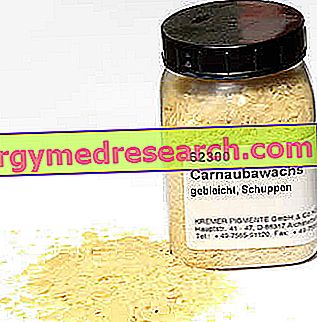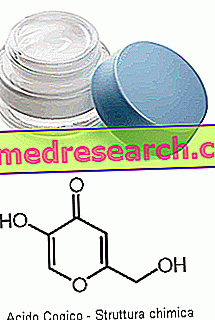What is Carnauba Wax?
Carnauba wax is a natural product derived from the leaves of some palm trees belonging to the Copernicia genus, among which the species Copernicia cerifera and the species Copernicia prunifera (Mueller), native to Argentina, South America and the north-eastern regions of Brazil, where it is still cultivated today. Not by chance the term "carnauba" derives from the name of an indigenous Brazilian population.

Image taken from en.wikipedia.org
Carnauba is a very precious vegetable wax, whose prestige has earned it the nickname "queen of waxes".
This particular type of search is used in many areas, from the cosmetic one, up to the use in the food industry.
Production
Carnauba wax covers the leaves and buds of the palm, protecting them from the sun and excess water during the rainy season.
The leaves, collected in the dry season, are dried in the sun, then scraped and beaten to remove the wax.
Depending on the intended use, the wax thus obtained is more or less refined and bleached, melted and piled in bread or other formats.
The purification of carnauba wax usually occurs by filtration, centrifugation and bleaching.
Depending on the degree of purity, carnauba wax is classified into three different groups, distinguished by the letters T1, T3 and T4.
Composition
Carnauba wax is mainly composed of esters of hydroxylated fatty acids such as, for example, carnaubic acid and cerotic acid (in a percentage of about 80%), to which fatty alcohols (about 10%) and hydroxycarboxylic acids are also added (in percentages of about 6-10%).
Features
At the sight, the carnauba wax has a variable color from gray-greenish to pale yellow, or possibly whitish due to the process of bleaching suffered. It is insoluble in water but soluble - especially when hot - in common organic solvents such as ethyl acetate.
It is characterized by a particularly high melting point (82 ° - 85.5 ° C); this is why it is much more consistent than the other waxes, to which it is added to increase the melting point, hardness and resistance of the product.

Palm from which carnauba wax is extracted
Property
Given its particular characteristics - and, in particular, its high melting point - and given its unique composition, carnauba wax has a series of properties that allow it to be used in various fields.
In fact, the carnauba wax is equipped with:
- Emollient properties for the skin;
- Polishing properties;
- Water repellent properties (it forms a sort of film that protects the surface on which it is applied by water);
- Properties thickeners and hardeners (given the high melting point it gives greater resistance to heat to the products in which it is found);
- Preservative properties.
Finally, carnauba wax is hypoallergenic. So far there have been no reports of any allergic reactions due to the intake or use of carnauba wax. Furthermore, there are no studies showing any toxicity or danger of use in humans.
uses
As repeatedly stated in the article, due to its many and interesting properties, carnauba wax is used in various fields, such as cosmetics, food or pharmaceutical.
Food uses
In the food industry, carnauba wax (distinguished by the code E903) is used as a coating agent in confectionery products (eg Tic Tac®), small coated bakery products, snacks (for example in M & M's®), fruit in shell, coffee beans and certain supplements.
Cosmetics
In the cosmetic industry, carnauba wax is mainly used for the production of lipsticks, due to its thickening and polishing effect. It is also used in the production of creams, lip balms, mascara, cream eye shadows, deodorants, foundation, mascara and eyeliner. Finally, carnauba wax is also added in the production of solid soaps.
See also: carnauba wax in cosmetics
Pharmaceutical uses
In the pharmaceutical industry, carnauba wax is used as a coating agent for tablets. Its presence in the formulation, in fact, helps to protect the active ingredients from humidity and oxidation, masking any unpleasant odors and flavors, and improving the aesthetic appearance of the tablet.
Other uses
Carnauba wax is also used in the restoration of old pipes and floors, on which it forms a rigid film that gives shine and resists wear for a long time, protecting it from dirt and water.
Similarly, it is used in the production of candles and polishing waxes for automobiles, surfboards or shoes, in some paper coatings and in the manufacture of pencils and crayons.



